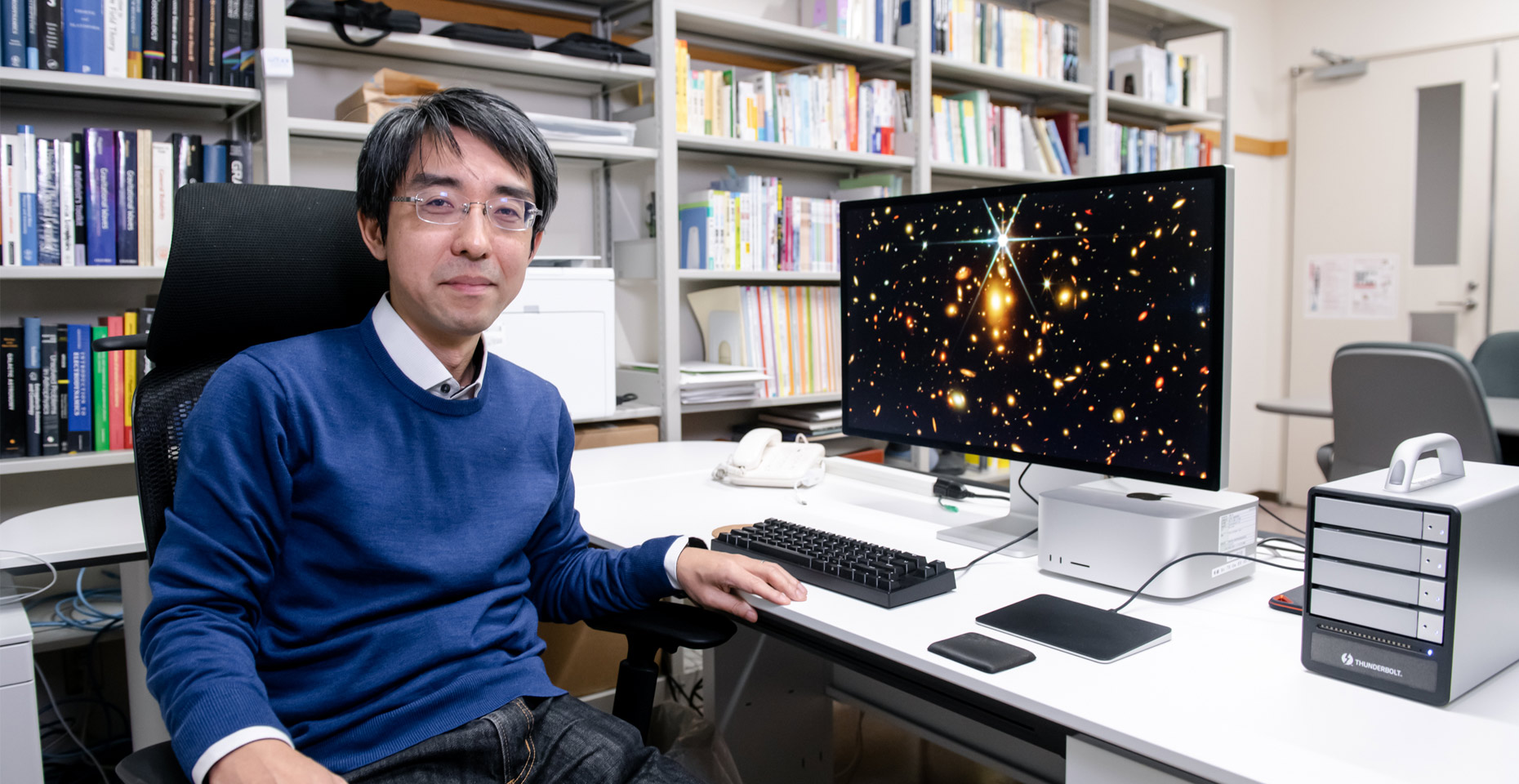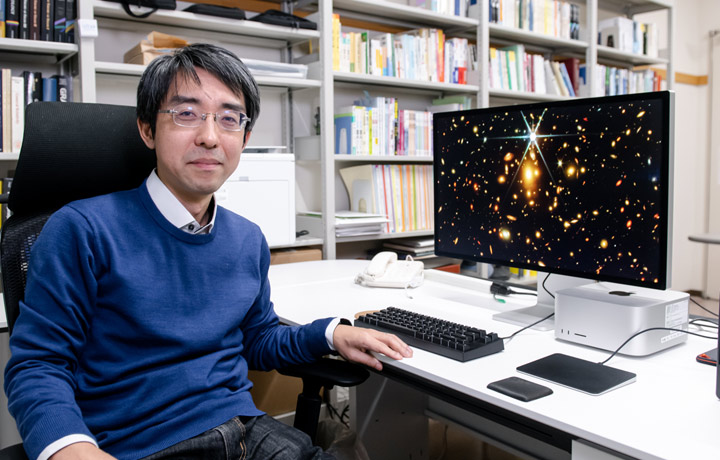Have you ever wondered how the Universe evolve into its current state? What fills the vast expanse of the space? While we inhabit the cosmos, our understanding of it remains limited. Professor Masamune Oguri, a renowned scientist at the Center for Frontier Science, tackles the enigma surrounding dark matter, unidentified substances, and the very origin and structure of our Universe. We had the opportunity to discuss with Professor Oguri his groundbreaking discoveries and explore the guiding principles that drive his ongoing research.
Looking at distant stars through a “Space Lens”

Please tell us about your research field, Cosmology
Cosmology is a scientific discipline that investigates the origins and structure of the entire Universe. My research focuses on a fascinating component called dark matter, which is believed to play a crucial role in the formation of galaxies and the overall structure of the cosmos.
Unlike ordinary matter, dark matter is not detectable through optical means using a telescope, and it hardly interacts with matter surrounding us. Its elusive nature has made it challenging to directly observe and comprehend its true identity. In my research, I employ a technique called “Gravitational Lens” to understand the properties and behavior of dark matter.
What is the gravitational lens phenomenon?
Gravity warps the fabric of spacetime, causing the path of light, which should travel in a straight line, to bend. Have you ever played with a magnifying glass as a child, refracting sunlight to create a bright spot and even making smoke appear from a piece of black paper? The phenomenon of gravitational lensing is similar to this.
Through the concentration of light by gravitational lens phenomenon, we can even capture a faint amount of light that cannot be observed normally. In 2022, we reported the discovery of a solitary star located 12.9 billion light-years away. Considering that the Universe is believed to have originated 13.8 billion years ago, studying stars just 900 million years after the birth of the cosmos could provide vital insights into the evolution of the Universe.
Additionally, by analyzing the gravitational lens phenomenon itself, we can estimate the amount of mass required to create such spacetime distortions and understand the distribution of mass. For instance, in astronomical objects known as galaxy clusters, where a significant amount of dark matter accumulates, strong evidence has been obtained indicating that the distribution of dark matter is not uniform but rather highly distorted, taking on a flattened elliptical shape.
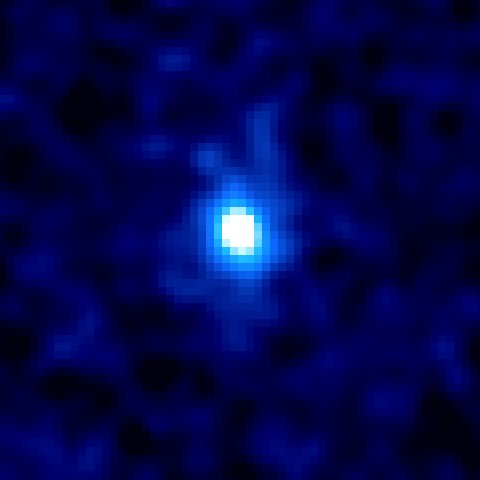
Were you interested in space since childhood?
No, actually, during my middle school and high school years, I had a keen interest in history, particularly in the Records of Three Kingdoms (Sanguo Zhi). It was mostly influenced by games, to be honest!I was good at mathematics, and it was in university that I found a sense of fulfillment in studying physics related to natural phenomena. It was an exciting era when astrophysics was starting to gather a wealth of observational data.During that time, significant discoveries began to emerge, revealing the remarkable composition of the Universe. It became evident that the matters present in our immediate surroundings constitute only 5% of the entire Universe, while less than 30% is attributed to dark matter. The remaining 70% revealed itself to be composed of enigmatic dark energy, responsible for accelerating the expansion of the Universe. As an amateur, it appeared to me that exciting discoveries lay ahead, prompting me to embark on the path of cosmology.
Winning the Supernova “Prediction Race”

Since embarking on the path of cosmology, what notable discoveries have you made?
One discovery that has left a lasting impression on me was the “prediction” of the images of a supernova captured by a gravitational lens.
A supernova is a celestial body that illuminates when a star reaches its final stage and explodes. When a supernova is strongly influenced by a gravitational lens, the curvature of spacetime causes the light from the supernova to follow different paths, resulting in the phenomenon of the supernova splitting into multiple images. Consequently, these images reach Earth with a time delay.
In November 2014, there was a report that four images of a supernova were observed due to the gravitational lens phenomenon. Using a self-developed software called glafic*, I performed the calculations to reproduce the mass distribution of the gravitational lens. The results indicated that another image would appear exactly one year later. However, other researchers have come up with various claims, suggesting image appearances at 0.6 years or 3.6 years later.
glafic:
Software specifically designed for gravitational lens analysis. It encompasses various functions necessary for studying and analyzing gravitational lenses, including calculating the actual arrangement of observed images based on assumed mass models and the position of background source objects, as well as reconstructing the mass distribution that reproduces the observed image shapes and arrangements.
It sounds like a “prediction race”
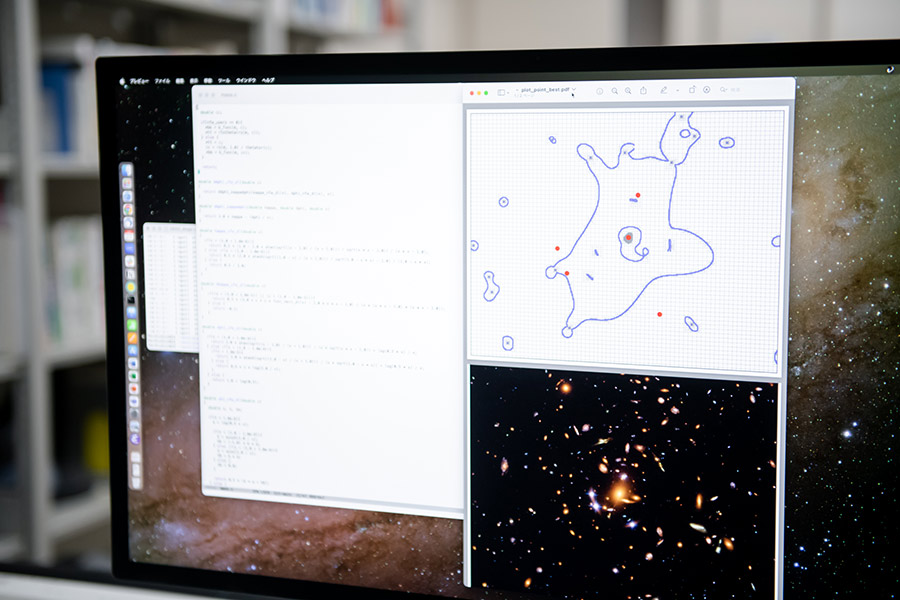
Almost a year later, in December 2015, the supernova images were finally observed precisely where I predicted. I remember that I experienced a sense of relief instead of feeling delighted that my prediction was accurate.
However, the journey does not end with a successful prediction. When calculating the time difference, we employ a parameter called “Hubble constant.” The Hubble constant is a crucial value to determine the current expansion rate and the distance within the Universe. It allows us to analyze the size of the Universe from Earth. I expect to be able to report on the results of this analysis soon.
What’s the recent hot topic of discussion?
One of the recent hot topics is the launch of the James Webb Space Telescope in 2021. This telescope has the capability to observe distant galaxies with great clarity, leading to significant advancements in deep space exploration. The abundance of observational data has reached a point where the analysis is struggling to keep up, leading to a delightful sense of being overwhelmed among researchers.
In the summer of 2023, the launch of the Euclid satellite is scheduled, with the primary goal of understanding the nature of dark energy. Additionally, the newly constructed Vera C. Rubin Observatory in Chile is set to become operational soon. I am involved in these projects and eagerly looking forward to the data they will provide and the discoveries that await us.
True success lies in “self-creation,” not in borrowing from others.
Why did you create the analysis software, glafic?
One reason is my genuine interest in software development and finding it interesting. However, I strongly believe in the significance of creating my own “tools,” including devices and software, for conducting cutting-edge research. Relying solely on borrowed resources from others makes it difficult to reach the pinnacle of success. In the field of physics, it is a longstanding tradition to make your own tools that serve as the foundation of your research, and wholeheartedly embrace this belief.
Is there anything else you value in your research?
I prioritize valuing simple questions and seeking to unravel them one by one in my research. To achieve this, I actively engage with individuals from diverse fields, listen to their perspectives, and read relevant journal articles, aiming to gain valuable insights and inspiration for my own research.
Lately, I have developed a keen interest in gravitational waves. I believe that advancements in gravitational wave observations could potentially provide insights into the distribution and properties of dark matter. This, in turn, would greatly enhance and invigorate the field of cosmological research.
Finally, please give a message to students and early-career researchers
I find research to be immensely rewarding and fascinating, especially when I uncover previously unknown knowledge through personal exploration and inquiry. As an educator, I strive to guide my students to have such experiences. It is my hope that they can embrace the excitement and sense of fulfillment that comes with the research process and develop a genuine appreciation for the wonders of knowledge.
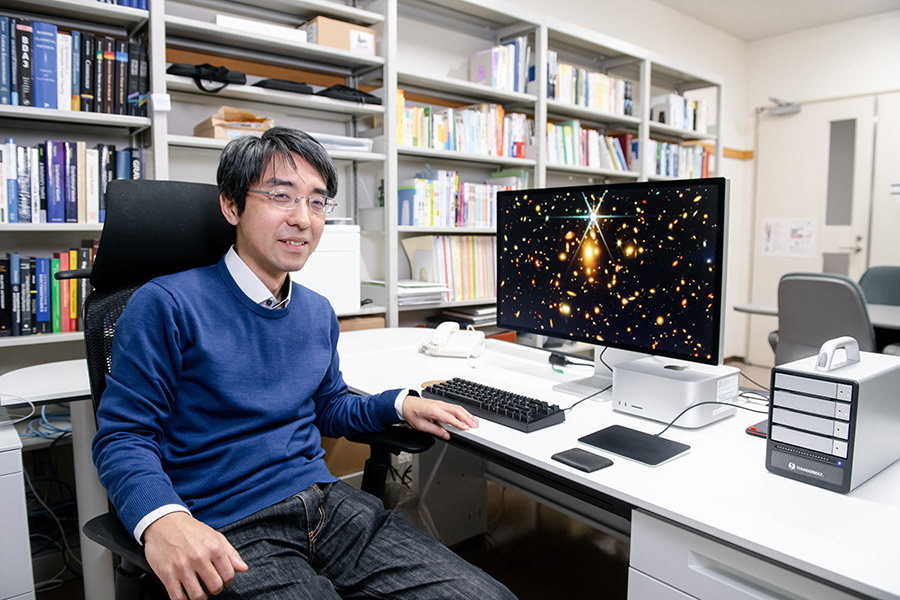
Recommend
-

Reassessing the role of “Forest Resources” in achieving carbon neutrality: Measuring forests with the combination of drones, mathematics, and computer graphics
2023.09.12
-

Unlocking the Potential of Plant Molecules: Charting a New Continent in Natural Products Biology
2024.09.30
-

From Virtue to the Stars: Rethinking Education and the Universe through Virtue Ethics
2025.04.18


